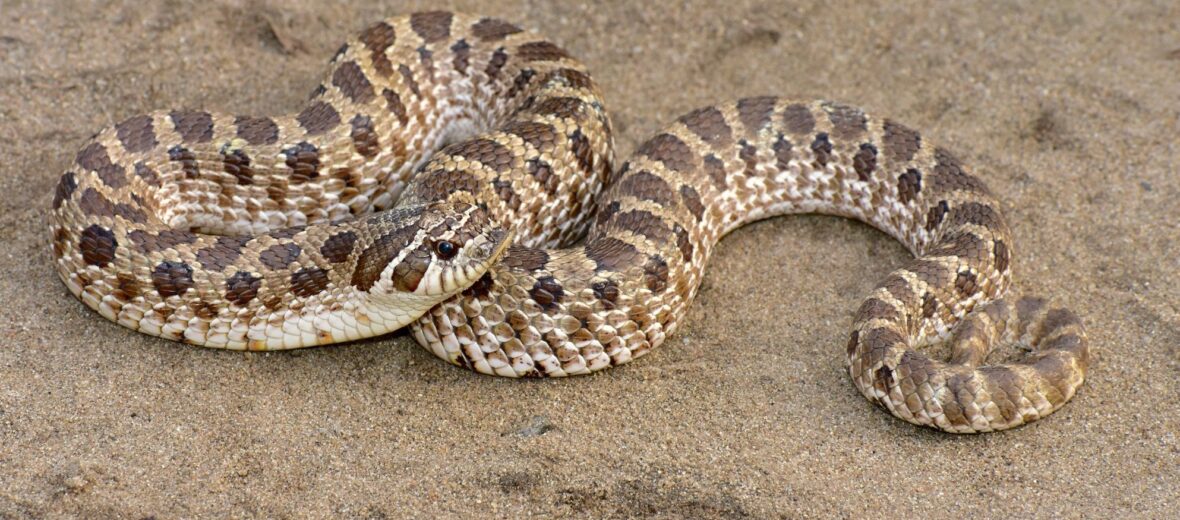
The western hognose, aka blow snake, bluffer, faux viper, plains hognose snake, prairie hognose snake, spoonbill snake, spreadhead snake, Texas hognose snake, or Texas rooter, can be found from southern Canada throughout the United States on down into northern Mexico. They prefer habitats with sandy soil and soil with lots of gravel; wide valleys; prairies; riverine floodplains; scrublands; grasslands; semi-deserts; and semi-agricultural areas. Due to a stable and numerous population and wide-spread distribution, these snakes are listed as Least Concern. Their primary threat is that of habitat destruction at the hands of agriculture and over-collection for the pet trade. This article is on special request from Geoff.
First the Stats…
Scientific name: Heterodon nasicus
Weight: Up to .77 lb.
Length: Up to 33+ inches
Lifespan: Up to 20 years
Now on to the Facts!
1.) These snakes are sexually dimorphic (males and females are notably different in size – with females being much larger than males).
2.) Hognose snakes are diurnal (active during the day).
3.) Like other snakes, they are solitary and only come together to mate.
4.) The western hognose hides in lose soil, sand, or in abandoned animal burrows at night.
5.) They brumate (hibernation for reptiles), during the colder winter months, in burrows.
But wait, there’s more on the western hognose!
6.) When threatened, they will flatten their neck, by the base of their head, huff and puff loudly, and engage in mock strikes (strikes with their mouth closed).
7.) If the above mentioned displays fail, these snakes will simply curl up and play dead.
Did you know…?
Western hognose snakes are 1 of only a few snakes able to eat poisonous toads, as their saliva has evolved to break down the toad’s toxic secretions.
8.) A group of snakes is called a bed, den, knot, nest, or pit.
9.) Hognose snakes prey on frogs, toads, lizards, juvenile mice, juvenile rats, and occasionally even birds.
10.) Foxes, coyotes, crows, raccoons, hawks, larger snakes, domestic & feral cats and domestic & feral dogs all prey on these snakes.
But wait, there’s still more on the western hognose!
11.) These snakes are polygynandrous (males and females have multiple breeding partners).
12.) Females lay up to 23 eggs that hatch in up to 60 days.
Did you know…?
The western hognose snake is a popular pet snake, as they are small, manageable, and usually quite docile. They also breed readily in captivity.
13.) Snakelets are born precocial (totally self sufficient), like all snakes.
14.) If spotted by a perceived threat, they will writhe around as if in pain while simultaneously emitting a foul odor from their cloaca, finishing the dramatic scene by lying upside down, unmoving, and playing dead.
15.) Even though these snakes are rear fang venomous (their fangs are located in the back of their top jaw), their venom is mild and only used to subdue prey items. Plus, a bite from these little fakers is rare, at best.
Now a Short Western Hognose Video!
Be sure to share & comment below! Also, check out the Critter Science YouTube channel. Videos added frequently!
Want to suggest a critter for me to write about? Let me know here.



